Production of Okadaic Acid in Prorocentrum Lima Through Mixotrophic Cultures with Macroalgal Polysaccharides
Resumen
Prorocentrum lima is highly investigated in the aquaculture of bivalve mollusks due to the production of toxins. Currently, various studies with traditional autotrophic means are used to increase the production of okadaic acid (OA) in P. lima culture, although the synthesis of its toxins occurs in small quantities. The innovation of mixotrophic cultures with macroalgal polysaccharides allowed us to know that the P. lima strains used were capable of assimilating organic carbon. Strain D008-1 grew better in the medium with Agarophyton chilensis polysaccharides (0.07±0.06 day-1), however, strain D008-5 that grew in the medium with Codium fragile polysaccharides synthesized the greatest amount of OA (13.2 pg OA cell-¹) on day 7, achieving more OA in a shorter time than the L1-Si autotrophic medium. This production could be due to the presence of sulfated and glucose groups in the polysaccharides of C. fragile. In both autotrophic and mixotrophic cultures, a high production of OA was obtained compared to a reduced amount of Dinophysistoxin-1 (DTX-1). This study consisted of implementing a non-traditional means through an organic carbon source to increase biomass growth and toxin synthesis of P. lima.
Descargas
Citas
Abreu, A., Fernandes, B., Vicente, A., Teixeira, J. & G. 2012. Dragone, Mixotrophic cultivation of Chlorella vulgaris using industrial dairy waste as organic carbon source. Bioresource Technology, 118, 61–66, https://doi.org/10.1016/j.biortech.2012.05.055
Aquino-Cruz, A., Purdie, D. & S. Morris. 2018. Effect of increasing sea water temperature on the growth and toxin production of the benthic dinoflagellate Prorocentrum lima. Hydrobiologia, 813(1) (2018) 103–122, https://doi.org/10.1007/s10750-018-3512-4
Bomber, J. & K. Aikman. 1989. The Ciguatera Dinoflagellates. Biological Oceanography, 6, 291–311.
Bravo, I., Fernández, M. L., Ramilo, I. & A. Martínez. 2001. Toxin composition of the toxic dinoflagellate Prorocentrum lima isolated from different locations along the Galician coast (NW Spain). Toxicon, 39(10), 1537–1545, https://doi.org/10.1016/S0041-0
Carlson, R., Morey-Gaines, G., Tindall, D. & R. Dickey. 1984. Ecology of Toxic Dinoflagellates from the Caribbean Sea Effects of Macroalgal Extracts on Growth in Culture. Sea Food Toxins, 24, 271–287.
Cembella, A., Antia, N. & P. Harrison. 1985. The utilization of inorganic and organic phosphorous compounds as nutrients by eukaryotic microalgae: A multidisciplinary perspective. Part 2. CRC Critical Reviews in Microbiology, 11, 13–81. https://doi.org/https://doi.org/10.3109/10408418409105902
David, H., Laza-Martínez, A., Kromkamp, J. C. & E. Orive. 2018. Physiological response of Prorocentrum lima (Dinophyceae) to varying light intensities. FEMS Microbiology Ecology, 94(1), 1–12, https://doi.org/10.1093/femsec/fix166
EU-RL-MB, EU-Harmonised Standard Operating Procedure for determination of lipophilic marine biotoxins in molluscs by LC-MS/MS (2015) pp. 33.
Florez, J., Camus, C., Hengst, M. & A. Buschmann. 2017. A functional perspective analysis of macroalgae and epiphytic bacterial community interaction. Frontiers in Microbiology, 8, 1–16. https://doi.org/10.3389/fmicb.2017.02561
Fraga, S. 2014. Caracterización taxonómica y ecología de especies crípticas o pseudocrípticas de dinoflagelados nocivos. Universidad de Vigo.
Glibert, P. & C. Legrand. 2006. The Diverse Nutrient Strategies of Harmful Algae: Focus on Osmotrophy. Ecology of Harmful Algae, 189, 163–175. https://doi.org/10.1007/978-3-540-32210-8
Guillard, R. R. L. & P. E. Hargraves. 1993. Stichochrysis immobilis is a diatom, not a chrysophyte. Phycologia, 32(3), 234–236, https://doi.org/10.2216/i0031-8884-32-3-234.1
Gómez, F. 2012. A quantitative review of the lifestyle, habitat and trophic diversity of dinoflagellates (Dinoflagellata, Alveolata). Systematics and Biodiversity, 10(3), 37–41, https://doi.org/10.1080/14772000.2012.721021
Hu, T., LeBlanc, P., Burton, I. W., Walter, J. A., McCarron, P., Melanson, J. E. & W. K. Strangman. 2017. Wright, Sulfated diesters of okadaic acid and DTX-1: Self-protective precursors of diarrhetic shellfish poisoning (DSP) toxins. Harmful Algae, 63, 85–93, https://doi.org/10.1016/j.hal.2017.01.012
Jeong, H. J., Yeong, D. Y., Jae, Y. P., Jae, Y. S., Seong, T. K., Seung, H. L., Kwang, Y. K. & H. Y. Won. 2005. Feeding by phototrophic red-tide dinoflagellates: Five species newly revealed and six species previously known to be mixotrophic. Aquatic Microbial Ecology, 40(2), 133–150. https://doi.org/htpps//:10.3354/ame040133
Jeong, H., Yoo, Y., Kim, J., Seong, K., Kang, N., & T. Kim. 2010. Growth, Feeding and Ecological Roles of the Mixotrophic and Heterotrophic Dinoflagellates in Marine Planktonic Food Webs. Ocean Sci. J. 45(2) 65–91. https://doi.org/htpps//:10.1007/s12601-010-0007-2
Jeong, H., Lim, A., Franks, P., Lee, K., Kim, J., Kang, N., Leen, M., Jang, T., Lee, S., Young, E., Park, J., Yoo, Y., Seong, K., Kwon, J. & T. Jang. 2015. A hierarchy of conceptual models of red-tide generation: Nutrition, behavior, and biological interactions. Harmful Algae, 47. 97–115.
Jeong, H., Ok, J., Lim, A., Kwon, J., Kim, S. & S. Lee. 2016. Mixotrophy in the phototrophic dinoflagellate Takayama helix (family Kareniaceae): Predator of diverse toxic and harmful dinoflagellates. Harmful Algae, 60, 92–106. https://doi.org/10.1016/j.hal.2016.10.008
Kaeffer, B., Bérard, C., Lahaye, M., Blottiére, H. & C. Cherbut. 1999. Biological Properties of Ulvan, a New Source of Green Seaweed Sulfated Polysaccharides, on Cultured Normal and Cancerous Colonic Epithelial Cells. Planta Medica, 65, 527–531.
Koike, K., Sato, S., Yamaji, M., Nagahama, Y., Kotaki, Y., Ogata, T. & M.bKodama. 1998. Occurrence of okadaic acid-producing Prorocentrum lima on the Sanriku coast, Northern Japan. Toxicon, 36(12), 2039–2042, https://doi.org/https//:10.1016/S0041-0101(98)00132-9
Kolsi, R., Jardak, N., Hajkacem, F., Chaaben, R., Jribi, I., Feki, A., Rebai, T., Jamoussi, K., Fki, L., Belghith, H. & K. Belghith. 2017. Anti-obesity effect and protection of liver-kidney functions by Codium fragile sulphated polysaccharide on high fat diet induced obese rats. International Journal of Biological Macromolecules, 102, 119–129
Lawrence, J. E., Grant, J., Quilliam, M. A., Bauder, A. G. & A. D. Cembella. 2000. Colonization and growth of the toxic dinoflagellate Prorocentrum lima and associated fouling macroalgae on mussels in suspended culture. Marine Ecology Progress Series, 201, 147–154. https://doi.org/10.3354/meps201147
Lee, K., Jeong, H., Jang, T., Lim, A., Kam, N., Kim, J., Park, K. & K. Lee. 2014. Feeding by the newly described mixotrophic dinoflagellate Gymnodinium smaydae: Feeding mechanism, prey species, and effect of prey concentration. Journal of Experimental Marine Biology and Ecology, 459, 114–125, https://doi.org/10.1016/j.jembe.2014.05.011
Lee, K., Jeong, H., Kwon, J., Kang, H., Kim, J., Jang, S., Park, J., Yoon, E. & J. Kim. 2016. Mixotrophic ability of the phototrophic dinoflagellates Alexandrium andersonii, A. affine, and A. fraterculus. Harmful Algae, 59, 67–81, https://doi.org/https//:10.1016/j.hal.2016.09.008
Lee, L. K., Lim, Z. F., Gun, H., Chan, L. L., Litaker, R. W., Tester, P., A. Leaw., C. P. & P. T. Lim. 2020. Effects of substratum and depth on benthic harmful dinoflagellate assemblages. Scientific Reports, 10(1), 11251, https://doi.org/10.1038/s41598-020-68136-6
LeGresley, M. & G. McDermott. 2010. Counting chamber methods for quantitative phytoplankton analysis - haemocytometer, Palmer-Maloney cell and Sedgewick-Rafter cell. In Microscopic and molecular methods for Quantitative phytoplankton analysis. pp. 25–30.
Levasseur, M., Thompson, P. & P. Harrison. 1993. Physiological acclimation of marine phytoplankton to different nitrogen sources. J. Phycol, 29, 587–595.
Levasseur, M., Couture, J., Weise, A., Michaud, S., Elbrächter, M., Sauvé, G. & E. Bonneau. 2003. Pelagic and epiphytic summer distributions of Prorocentrum lima and P. mexicanum at two mussel farms in the Gulf of St. Lawrence, Canada. Aquatic Microbial Ecology, 30, 282–293, https://doi.org/10.3354/ame030283
Luo, Z., Zhang, H., Krock, B., Lu, S., Yang, W. & H. Gu. 2017. Morphology, molecular phylogeny and okadaic acid production of epibenthic Prorocentrum (Dinophyceae) species from the northern South China Sea. Algal Research, 22, 14–30, https://doi.org/10.1016/j.algal.2016.11.020
Matsuhiro, B. & C. Urzúa. 1990. Agars from Gracilaria chilensis (Gracilariales). Journal of Applied Phycology, 2(3), 273–279, https://doi.org/https//:10.1007/BF02179785
McLachlan, J. L., Marr, J. C., Conlon‐Keily, A. & A. Adamson. 1994. Effects of nitrogen concentration and cold temperature on DSP‐toxin concentrations in the dinoflagellate Prorocentrum lima (Prorocentrales, Dinophyceae). Natural Toxins, 2(5), 263–270, https://doi.org/10.1002/nt.2620020504
Mitra, A. & K. Flynn. 2010. Modelling mixotrophy in harmful algal blooms: More or less the sum of the parts? Journal of Marine Systems, 83, 158–169, https://doi.org/10.1016/j.jmarsys.2010.04.006
Moreira-González, A. R., Fernandes, L. F., Uchida, H., Uesugi, A., Suzuki, T., Chomérat, N., Bilien, G. & L. L. Mafra. 2018. Variations in morphology, growth, and toxicity among strains of the Prorocentrum lima species complex isolated from Cuba and Brazil. Journal of Applied Phycology, 31(1), 519–532, https://doi.org/10.1007/s10811-018-1587-y
Morton, S. & D. Tindall. 1995. Morphological and biochemical variability of the toxic dinoflagellate Prorocentrum lima isolated from three locations at Heron Island, Australia. J. Phycol., 31, 914–921.
Mountfort, D., Suzuki, T. & P. Truman. 2001. Protein phosphatase inhibition assay adapted for determination of total DSP in contaminated mussels. Toxicon, 39, 383–390.
Murakami, Y., Oshima, Y. & T. Yasumoto. 1982. Identification of okadaic acid as a toxic component of a marine dinoflagellate Prorocentrum lima. Nippon Suisan Gakkaishi, 48(1) 69–72, https://doi.org/https//:10.2331/suisan.48.69
Nascimento, S. M., Purdie, D. A. & S. Morris. 2005. Morphology, toxin composition and pigment content of Prorocentrum lima strains isolated from a coastal lagoon in southern UK. Toxicon, 45(5) 633–649, https://doi.org/10.1016/j.toxicon.2004.12.023
Nascimento, S. M., Salgueiro, F., Menezes, M., de A. Oliveira, Magalhães, V. C. P., De Paula, J. C. & S. Morris. 2016. Prorocentrum lima from the South Atlantic: Morphological, molecular and toxicological characterization. Harmful Algae, 57, 39–48, https://doi.org/10.1016/j.hal.2016.05.006
Nishimura, T., Uchida, H., Noguchi, R., Oikawa, H., Suzuki, T., Funaki, H., Ihara, C., Hagino, K., Arimitsu, S., Tanii, Y., Abe, S., Hashimoto, K., Mimura, K., Tanaka, K., Yanagida, I. & M. Adachi. 2020. Abundance of the benthic dinoflagellate Prorocentrum and the diversity, distribution, and diarrhetic shellfish toxin production of Prorocentrum lima complex and P. caipirignum in Japan. Harmful Algae, 96, 101687, https://doi.org/10.1016/j.hal.2019.101687
Niu, Z., Xu, W., Na, J., Lv, Z. & Y. Zhang. 2019. How long-term exposure of environmentally relevant antibiotics may stimulate the growth of Prorocentrum lima: A probable positive factor. Environmental Pollution, 255, 113149, https://doi.org/10.1016/j.envpol.2019.113149
Pan, Y., Cembella, A. & M. Quilliam. 1999. Cell cycle and toxin production in the benthic dinoflagellate Prorocentrum lima. Marine Biology, 134, 541–549.
Pan, L., Chen, J., Shen, H., He, X., Li, G., Song, X., Zhou, D. & C. Sun. 2017. Profiling of extracellular toxins associated with diarrhetic shellfish poison in Prorocentrum lima culture medium by high-performance liquid chromatography coupled with mass spectrometry. Toxins, 9(308), 1–18, https://doi.org/10.3390/toxins9100308
Parsons, M. & L. Preskitt. 2007. A survey of epiphytic dinoflagellates from the coastal waters of the island of Hawai’i. Harmful Algae, 6(5), (2007) 658–669, https://doi.org/10.1016/j.hal.2007.01.001
Price, D., Farinholt, N., Gates, C., Shumaker, A., Wagner, N., Bienfang, P. & D. Bhattacharya. 2016. Analysis of Gambierdiscus transcriptome data supports ancient origins of mixotrophic pathways in dinoflagellates. Environmental Microbiology, 18(12), 4501–4510.
Quilliam, M. & N. Ross. 1996. Analysis of diarrhetic shellfish poisoning toxins and metabolites in plakton and shellfish by ion-spray liquid chromatography-mass spectrometry. En: Snyder, A.P., Washington, D.C. (Eds.), Biochemical and Biotechnological Applications of Electrospray Ionization Mass Spectrometry. American Chemical Society. pp. 351-364.
Rains, L. K. & M. L. Parsons. 2015. Gambierdiscus species exhibit different epiphytic behaviors toward a variety of macroalgal hosts. Harmful Algae, 49, 29–39, https://doi.org/10.1016/j.hal.2015.08.005
Regueiro, J., Rossignoli, A., Álvarez, G. & J. Blanco. 2011. Automated on-line solid-phase extraction coupled to liquid chromatography-tandem mass spectrometry for determination of lipophilic marine toxins in shellfish. Food Chemistry, 129(2), 533–540, https://doi.org/https//:10.1016/j.foodchem.2011.04.054
Valdiviezo Cacay , M. H., Granda Dávila , P. E., Ruilova Reyes , B. G., & Córdova Rosario , I. M. (2024). Turismo de naturaleza: un tesoro para la identidad y la economía en la ruralidad del cantón Las Lajas de la provincia de El Oro, Ecuador. Estudios Y Perspectivas Revista Científica Y Académica , 4(1), 53–73. https://doi.org/10.61384/r.c.a.v4i1.78
Tama Sánchez , F. A., Vasquez Falconí, J. A., Aguilar Mejía , R. M., Rodríguez Pérez, J. C. A., López Solórzano, A. A., & Paredes Jeréz, K. D. (2024). Xeroderma Pigmentoso Reporte De Caso Y Revisión De La Literatura. Revista Científica De Salud Y Desarrollo Humano, 5(2), 44–55. https://doi.org/10.61368/r.s.d.h.v5i2.117
Valdiviezo Cacay , M. H., Granda Dávila , P. E., Ruilova Reyes , B. G., & Córdova Rosario , I. M. (2024). Turismo de naturaleza: un tesoro para la identidad y la economía en la ruralidad del cantón Las Lajas de la provincia de El Oro, Ecuador. Estudios Y Perspectivas Revista Científica Y Académica , 4(1), 53–73. https://doi.org/10.61384/r.c.a.v4i1.79
Martínez, O., Aranda , R., Barreto , E., Fanego , J., Fernández , A., López , J., Medina , J., Meza , M., Muñoz , D., & Urbieta , J. (2024). Los tipos de discriminación laboral en las ciudades de Capiatá y San Lorenzo. Arandu UTIC, 11(1), 77–95. Recuperado a partir de https://www.uticvirtual.edu.py/revista.ojs/index.php/revistas/article/view/179
v, H., & Quispe Coca, R. A. (2024). Tecno Bio Gas. Horizonte Académico, 4(4), 17–23. Recuperado a partir de https://horizonteacademico.org/index.php/horizonte/article/view/14
Da Silva Santos , F., & López Vargas , R. (2020). Efecto del Estrés en la Función Inmune en Pacientes con Enfermedades Autoinmunes: una Revisión de Estudios Latinoamericanos. Revista Científica De Salud Y Desarrollo Humano, 1(1), 46–59. https://doi.org/10.61368/r.s.d.h.v1i1.9
Riebesell, U., Bach, L., Bellerby, R., Monsalve, J., Boxhammer, T., Czerny, J., Larsen, A., Ludwig, A. & K. Schulz. 2017. Competitive fitness of a predominant pelagic calcifier impaired by ocean acidification. Nature Geoscience, 10(1), 19–23, https://doi.org/https//:10.1038/ngeo2854
Salerno, M. & D. Stoecker. 2009. Ectocellular glucosidase and peptidase activity of the mixotrophic dinoflagellate Prorocentrum minimum (Dinophyceae). Journal of Phycology, 45(1), 34–45, https://doi.org/https//:10.1111/j.1529-8817.2008.00622.x
Murillo Zavala, A. M., Chica Bravo, G. M., Franco Alvarado, I. E., & Vélez Castro, J. B. (2025). Marcadores tempranos en el diagnóstico de la enfermedad renal crónica en pacientes diabéticos e hipertensos: Revisión bibliográfica. Arandu UTIC, 12(1), 4465–4479. https://doi.org/10.69639/arandu.v12i1.905
Colmán López, M. C. (2025). La inteligencia artificial en la creación artística: Análisis de su influencia en la producción cultural. I+D Internacional Revista Científica Y Académica , 4(1), 43–64. https://doi.org/10.63636/3078-1639.v4.n1.26
Fernández Sánchez , D. (2025). Implementación de Algoritmos de Machine Learning para la Detección Temprana de Fraude en Transacciones Electrónicas. Ciencia Y Reflexión, 4(1), 2652–2667. https://doi.org/10.70747/cr.v4i1.285
Valdivieso Rezabala, R. S. (2025). Evaluación del Aprovechamiento de los Productos Forestales no Maderables en Tres Recintos de la Parroquia Campozano, Cantón Paján, Manabí, Ecuador. Ciencia Latina Revista Científica Multidisciplinar, 9(2), 7941-7959. https://doi.org/10.37811/cl_rcm.v9i2.17513
Pérez Gallegos , S. J., & Domínguez Marín, M. J. (2025). La Importancia de Contar con un Perfil Competitivo en Psicólogos que Atienden a Estudiantes Universitarios. Estudios Y Perspectivas Revista Científica Y Académica , 5(2), 881–895. https://doi.org/10.61384/r.c.a.v5i2.1166
Fernández Sánchez , D. (2025). Implementación de Algoritmos de Machine Learning para la Detección Temprana de Fraude en Transacciones Electrónicas. Ciencia Y Reflexión, 4(1), 2652–2667. https://doi.org/10.70747/cr.v4i1.285
Santelices, B. & D. Varela. 1993. Exudates from Gracilaria chilensis stimulate settlement of epiphytic ulvoids. Hydrobiologia, 260–261(1), 327–333, https://doi.org/10.1007/BF00049036
Shalaby, S. & H. Amin. 2019. Potential Using of Ulvan Polysaccharide from Ulva lactuca as a Prebiotic in Synbiotic Yogurt Production. Journal of Probiotics & Health, 7(1), 9pp, https://doi.org/10.35248/2329-8901.7.1.208
Smith, R. & D. Gilmour. 2018. The influence of exogenous organic carbon assimilation and photoperiod on the carbon and lipid metabolism of Chlamydomonas reinhardtii. Algal Research, 31, 122–137, https://doi.org/10.1016/j.algal.2018.01.020
Stoecker, D. & D. Gustafson. 2003. Cell-surface proteolytic activity of photosynthetic dinoflagellates. Aquatic Microbial Ecology, 30 (2), 175–183. https://doi.org/10.3354/ame030175
Sun, Y., Hui, W., Ganlin, G., Yinfang, P. & Y. Binlun. 2014. The isolation and antioxidant activity of polysaccharides from the marine microalgae Isochrysis galbana. Carbohydrate Polymers, 113, 22–31, https://doi.org/10.1016/j.carbpol.2014.06.058
Suzuki, T., Beuzenberg, V., Mackenzie, L. & M. Quilliam. 2004. Discovery of okadaic acid esters in the toxic dinoflagellate Dinophysis acuta from New Zealand using liquid chromatography/tandem mass spectrometry. Rapid Communications in Mass Spectrometry, 18, 1131–1138, https://doi.org/10.1002/rcm.1455
Suzuki, T., Watanabe, R., Yoshino, A., Oikawa, H., Uchida, H., Matsushima, R., Nagai, S., Kamiyama, T., Yamazaki, T., Kawaguchi, M. T., Yarita A., T. & A. Takatsu. 2014. Preparation of Diarrhetic Shellfish Toxins (DSTs) and Paralytic Shellfish Toxins (PSTs) by Large Algal Culture and Chemical Conversion. Lincoln MacKenzie [Ed]. MarineMarine and Freshwater Harmful Algae. Proceedings of the 16th International Conference on Harmful. Algae. Cawthron Institute, Nelson, New Zealand and the International Society for the Study of Harmful Algae (ISSHA), 34–39.
Tester, P. A., Kibler, S. R., Holland, W. C., Usup, G., Vandersea, M. W., Leaw, C. P., Teen, L. P., Larsen, J., Mohammad-Noor, N., Faust, M. A. & R. W. Wayne Litaker. 2014. Sampling harmful benthic dinoflagellates: Comparison of artificial and natural substrate methods. Harmful Algae, 39, 8–25, https://doi.org/10.1016/j.hal.2014.06.009
Tiffany, M. A., Bargu, S., Smith, E. & K. Ozhan. 2011. The Diatom World. The Diatom World, 19(1998), 519–534, https://doi.org/10.1007/978-94-007-1327-7
Vanucci, S., Guerrini, F., Milandri, A. & R. Pistocchi. 2010. Effects of different levels of N- and P-deficiency on cell yield, okadaic acid, DTX-1, protein and carbohydrate dynamics in the benthic dinoflagellate Prorocentrum lima. Harmful Algae, 9(6), 590–599, https://doi.org/10.1016/j.hal.2010.04.009
Varkitzi, I., Hatzianestis, I., Pyrgaki, C., Pagou, K., Granelí, E., Pavlidou, A., Montesanto, B. & A. Economou-Amilli. 2010. Unbalanced N:P ratios and nutrient stress controlling growth and toxin production of the harmful dinoflagellate Prorocentrum lima (Ehrenberg) Dodge. Harmful Algae, 9, 304–311, https://doi.org/10.1016/j.hal.2009.12.001
Varkitzi, I., Pagou, K., Pyrgaki, C. & I. Hatzianestis. 2017. A Biomass Upscale System for the Marine Dinoflagellate Prorocentrum lima and the Production of Bioactive Lipophilic Toxins. International Journal of Applied Sciences and Biotechnology, 5(4), 479–485, https://doi.org/10.3126/ijasbt.v5i4.18561
Wang, C., Yu, R. & M. Zhou. 2012. Effects of the decomposing green macroalga Ulva (Enteromorpha) prolifera on the growth of four red-tide species. Harmful Algae, 16, 12–19, https://doi.org/10.1016/j.hal.2011.12.007
Wang, S., Chen, J., Li, Z., Wang, Y., Fu, B., Han, X. & L. Zheng. 2015. Cultivation of the benthic microalga Prorocentrum lima for the production of diarrhetic shellfish poisoning toxins in a vertical flat photobioreactor. Bioresource Technology, 179, 243–248, https://doi.org/https//:10.1016/j.biortech.2014.12.019
Wang, L., Young, J., Geon, J. Jayawardena, T. U., Kim, Y., Young, J., Fu, X. & Y. Jeon. 2020. Protective effects of sulfated polysaccharides isolated from the enzymatic digest of Codium fragile against hydrogen peroxide-induced oxidative stress in in vitro and in vivo models. Algal Research, 48, 1–8, https://doi.org/10.1016/j.algal.2020.101891
Wu, H., Chen, J., Peng, J., Zhong, Y., Guo, M., Tan, Z., Zhai, Y. & S. Lu. 2020. Nontarget screening and toxicity evaluation of diol esters of okadaic acid and dinophysistoxins reveal intraspecies difference of Prorocentrum lima. Environmental Science & Technology. 1–40, https://doi.org/10.1021/acs.est.0c03691
Yaich, H., Garna, H., Besbes, S., Barthélemy, J., Paquot, M., Blecker, C. & H. Attia. 2014. Impact of extraction procedures on the chemical, rheological and textural properties of ulvan from Ulva lactuca of Tunisia coast. Food Hydrocolloids, 40, 53–63, https://doi.org/10.1016/j.foodhyd.2014.02.002
Zhang, Q., Song, J., Yu, R., Yan, T., Wang, Y., Kong, F. & M. Zhou. 2013. Roles of mixotrophy in blooms of different dinoflagellates: Implications from the growth experiment. Harmful Algae, 30, 10–26, https://doi.org/10.1016/j.hal.2013.08.003
Zhang, Y., Mu, J., Feng, Y., Kang, Y., Zhang, J., Gu, P. J., Wang, Y., Fang, M. & Y. H. Zhu. 2019. Broad-spectrum antimicrobial epiphytic and endophytic fungi from marine organisms: Isolation, bioassay and taxonomy. Marine Drugs, 7(2), 97–112, https://doi.org/10.3390/md7020097
Derechos de autor 2025 Roberto Pino Selles , Gonzalo Álvarez Vergara, Eduardo Uribe, Geovanna Parra Riofrío, Michael Araya, Francisco Álvarez Segovia

Esta obra está bajo licencia internacional Creative Commons Reconocimiento 4.0.











.png)
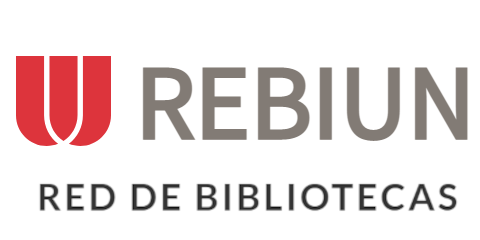









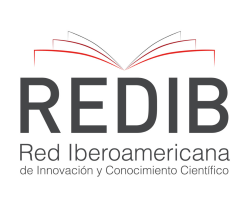


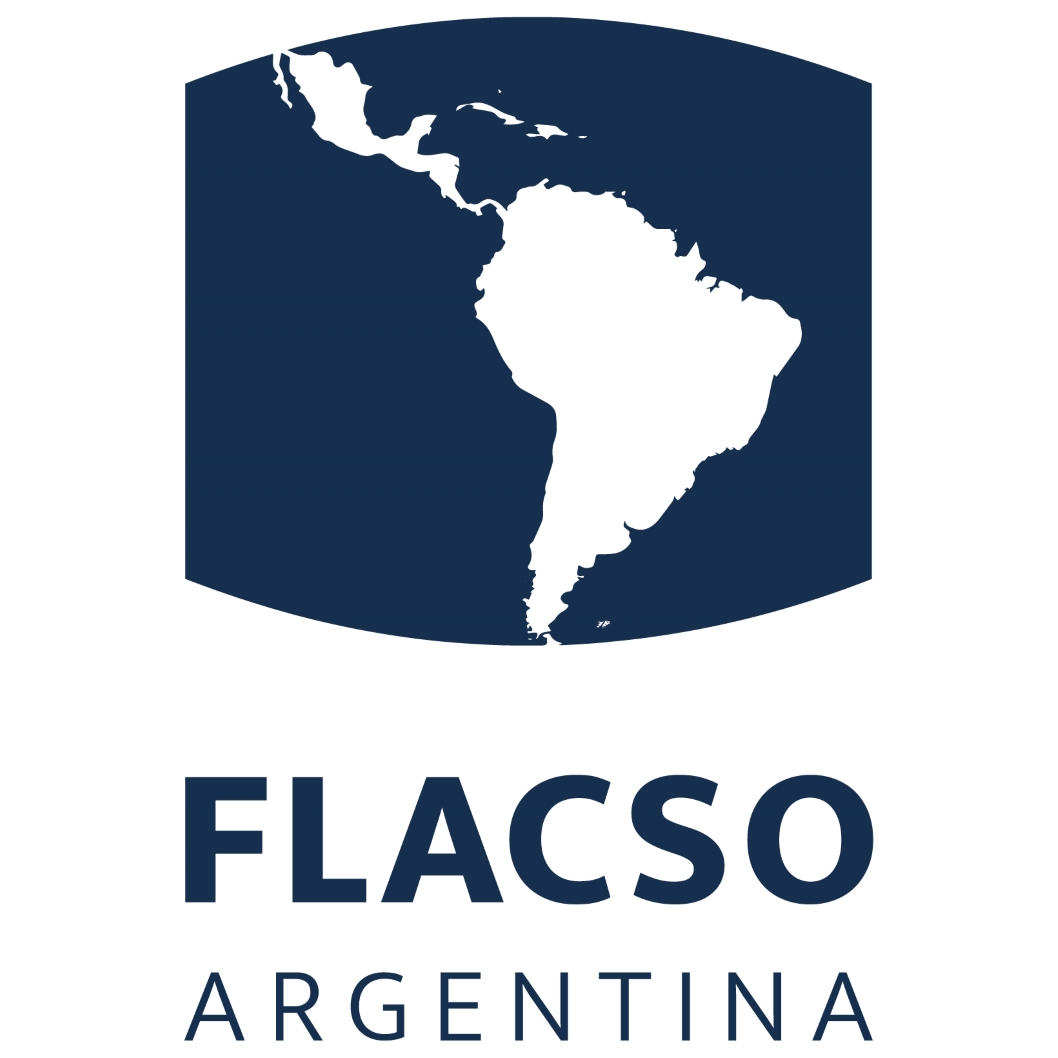

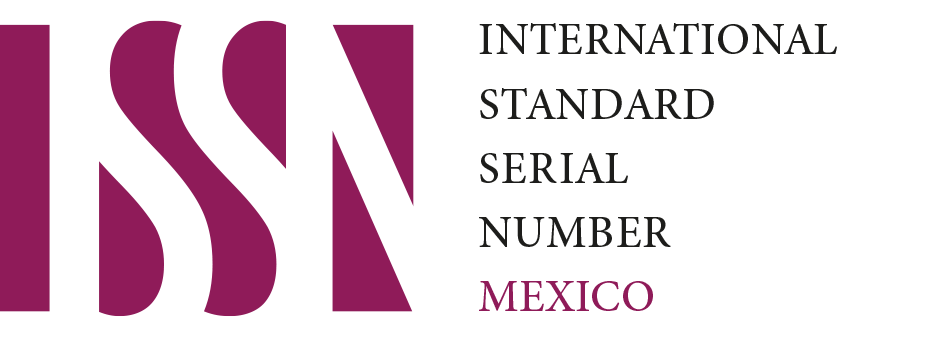
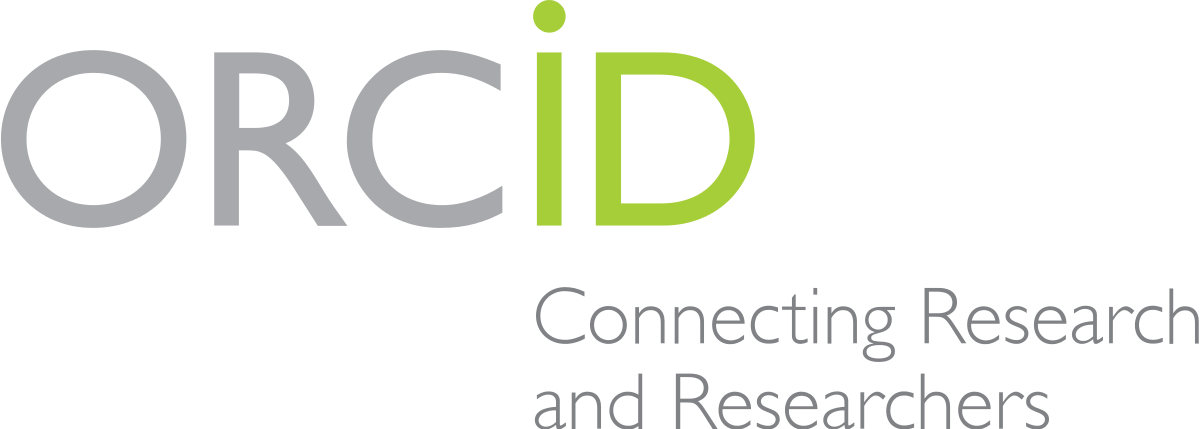



.png)
1.png)


